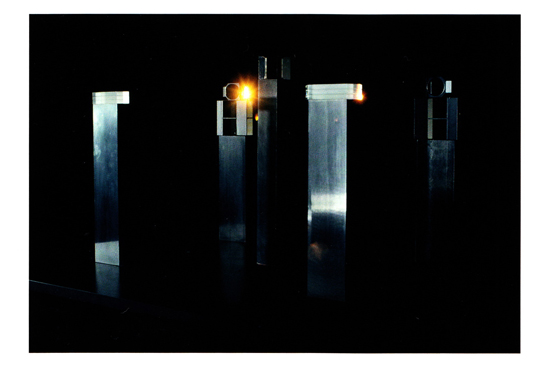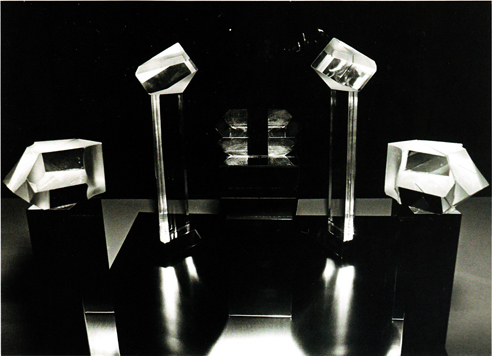Liliane Lijn, In The Valley of Darkness, 1973
Partly, perhaps as an act of mourning; more obviously as a reparative act, Lijn conceived of her manipulation of prisms as giving them a kind of restorative posthumous existence to remedy their mutilated identity: “A prism on its own is lost. It has no feet, no legs to stand on”. Her fantasy ran that they had lost their function in a world of technical forms by no longer being “anchored into a machine, which one way or another will be a machine for seeing… I must give it a body”.
Liliane Lijn (born 1939), is an American-born artist who was the first woman artist to work with kinetic text (Poem Machines), exploring both light and text as early as 1962. She has lived in London since 1966.
Utilising highly original combinations of industrial materials and artistic processes, Lijn is recognised for pioneering the interaction of art, science, technology, eastern philosophy and female mythology. Lijn is particularly known for her timeless, cone-shaped Koan series. In conversation with Fluxus artist and writer, Charles Dreyfus, Lijn stated that she primarily chose to ‘see the world in terms of light and energy’. Lijn describes her work as ‘A constant dialogue between opposites, my sculptures use light and motion to transform themselves from solid to void, opaque to transparent, formal to organic.’

